Threshold Ramps vs. Portable Ramps

Having wheelchair ramps at your home enables you to move in and out of your residence without relying on others, which can vastly improve your overall quality of life. A common decision when deciding on the best ramp often comes down to whether you need a threshold ramp or a portable ramp. This Guide's goal is to educate you on the two ramps and help you decide which is best for you!
Key Differences between Threshold Ramps and Portable Ramps
- Rubber Threshold Ramps - Threshold Ramps are often built with strong and highly durable rubber. Portable Ramps are mostly made of aluminum or fiberglass.
- Portable Ramps have more Flexible Height Options - Threshold Ramps only offer options up to 6" door thresholds.
- Threshold Ramps are more subtle - Portable Ramps are typically longer in length and have larger profiles.
- Portable Ramps have more...Portability - Threshold Ramps are typically used for more permanent options.
Key Similarities between Threshold Ramps and Portable Ramps
- Durable Construction - Rubber or aluminum, threshold and portable ramp is designed to last.
- Indoor & Outdoor Use - Both Ramps are designed to be used for indoor and outdoor use around your home or business.
- Multiple Sizes - Threshold and Portable Ramps both come in various sizes and designs to accommodate different needs and situations.
Table of Contents |
Characteristics of a Threshold Ramp
Threshold Wheelchair Ramp are specifically designed to be placed at door thresholds or other small height transitions. They are typically made of durable materials like aluminum or rubber, and are often wedge-shaped to provide a smooth transition over the threshold. These ramps are mostly designed to be permanent installations, and they are typically secured in place with screws or adhesive. Here are the main characteristics of Threshold Ramps:
Compact Size
Threshold Ramps are designed to be small and lightweight, making them easy to install and move as needed.
Durable Construction
The most common threshold ramps are made of highly durable Rubber. You'll find the widest range of sizes with Safepath's offerings. The next most commonly used material is aluminum.
Non-Slip Surface
Most threshold ramps feature a non-slip surface, which provides traction and prevents slips and falls.
Customizable Height
Some threshold ramps can be customized to fit specific height requirements, allowing them to provide a smooth transition over door thresholds and other small obstacles. You can either achieve the perfect heigh by finding the exact rubber threshold, or you can choose an adjustable aluminum threshold ramp that can be set within a certain range of heights to set it to your requirement.
Permanent Installation
Threshold Ramps are designed to be installed permanently, often with screws or adhesive, ensuring that they remain stable and secure over time. For Rubber Threshold Ramps, we recommend adhesives, such as SikaFlex 1a to secure the ramp.
Easy to Maintain
Most threshold ramps require little to no maintenance, making them a convenient solution for providing accessibility in residential or commercial settings.

If you have a single step or uneven flooring, a threshold ramp may be right for you. It's important to note that wheelchair threshold ramps are small, lightweight ramps that help wheelchairs and other mobility equipment ease over differences in elevation of up to 6". If you have a requirement higher than 6", it would be best to look into a larger Portable Ramp.
Characteristics of a Portable Ramp
Portable Wheelchair Ramps are designed to be lightweight and easy to move from place to place. They are often made of materials like aluminum or fiberglass, and are typically designed in a folding or telescoping design, making them easy to transport and store. There are smaller options to accommodate the lower thresholds at home and still provide that portability, but Portable Ramps will offer more options for the different higher requirements. They are also typically less expensive than comparable threshold ramps. Here are the main characteristics of Portable Ramps:
Lightweight
Portable Ramps are designed to be lightweight and easy to carry, making them ideal for use on the go.
Compact
Many portable ramps are designed to be compact and easy to store, which can be important for those who need to transport the ramp frequently.
Durable Construction
Portable Ramps are typically made of durable materials like aluminum, making them strong enough to support the weight of a wheelchair.
Non-Slip Surface
Most portable ramps feature a non-slip surface to provide traction and prevent slips and falls. There should be no concern about slipping on any of the portable ramps you decide on.
Versatile
Portable ramps can be used to provide access to a variety of different obstacles, such as steps, curbs, or vehicles.
Easy To Set Up:
Most portable ramps can be set up quickly and easily, often without need for tools or additional support.

Folding Wheelchair Ramps are excellent options if you have a temporary or portable requirement. Whether you need to use a wheelchair for a short term recovery from surgery or have a friend or family member coming to stay, a folding ramp provides the flexibility you need. And, you can even fold them up to travel with them wherever you go, like to a friend's house or a rental vacation. home.
Portable Wheelchair Ramps are available in bi-fold, tri-fold or solid options, but it's important to note that that these portable ramp options are not considered fully ADA-compliant. They do not have railings, so they should only be used for limited residential use.
Which Ramp is Right for You? Factors to Consider
Does it Need to be Permanent?
Who's going to be using the ramp? If the primary user lives at the residence and will be using the ramp on a daily basis, a permanent threshold ramp may be a good option if the height allows it. Also, if there's a going to be a caregiver using the ramp at the same time as the individual to help, it's important to consider the weight capacity of your ramp. Most larger rubber threshold ramps have an unlimited weight capacity.
What's the Height?
What's the height of the threshold? If it's 6" or less, you'll have the option to find a portable or threshold ramp dependent on other factors specific to your requirement. If the threshold is larger than 6", you'll have to look only at portable ramps as threshold ramps won't provide options for thresholds that high.
Swinging Door
Consider which way the door swings if one exists at the threshold. Many portable ramps are reliant upon resting on the threshold which could get in the way of a door. Pay attention to which way the door swings, and if it would get in the way, it may be a better option to get a threshold ramp that rests on the ground, and won't get in the way of any door swing.
Are There Multiple Heights/Locations?
Are there different thresholds throughout your home that you're going to want to use the ramp for? If so, getting a portable ramp that is easily moved and can be used for multiple heights is a good option.
If you need to be cognizant of swinging doors getting in the way, as well as a need for multiple heights, looking into an adjustable threshold ramp that is self supporting will be a good option to consider.
Confirm the Width You'll Need
Ramps like the Safepath EZ Edge Transition Rubber Ramps have a wide variety of width options if you have a requirement that requires a wider ramp. Most portable ramps are restricted to their width to common doorways/openings.
Budget?
Threshold Ramps have a wider range of prices for ramps that will accommodate the smallest thresholds up to 6". The higher end permanent rubber ramps can be expensive, but are secure and will last forever. Portable Ramps are typically a little less expensive than the comparable rubber threshold ramps.
What Mobility Equipment will You be Using?
Make sure you measure the mobility equipment you're going to use for the ramp. Some are wider than others, and it's important to know that your ramp will be sufficient to use it with as it relates to weight capacity and size.
Slope
ADA Guidelines require a 1:12 Slope, which means that every 1 inch of rise requires 12 inches of ramp. While ADA requirements don't apply to home ramps, it is wise to make sure the slope of your ramp isn't too steep. A steep ramp is more difficult for a wheelchair to navigate and can become a safety hazard.
___________________________________________
In summary, threshold wheelchair ramps are designed for permanent installation at doorways or small height transitions, while portable wheelchair ramps are designed to be lightweight and easy to move, making them ideal for use in a variety of situations. The choice between the two will depend on the specific accessibility needs of the user and the intended use of the ramp. If you have further questions on what the best ramp is for you, don't hesitate to Contact Reliable Ramps who'll be happy to help with any questions!




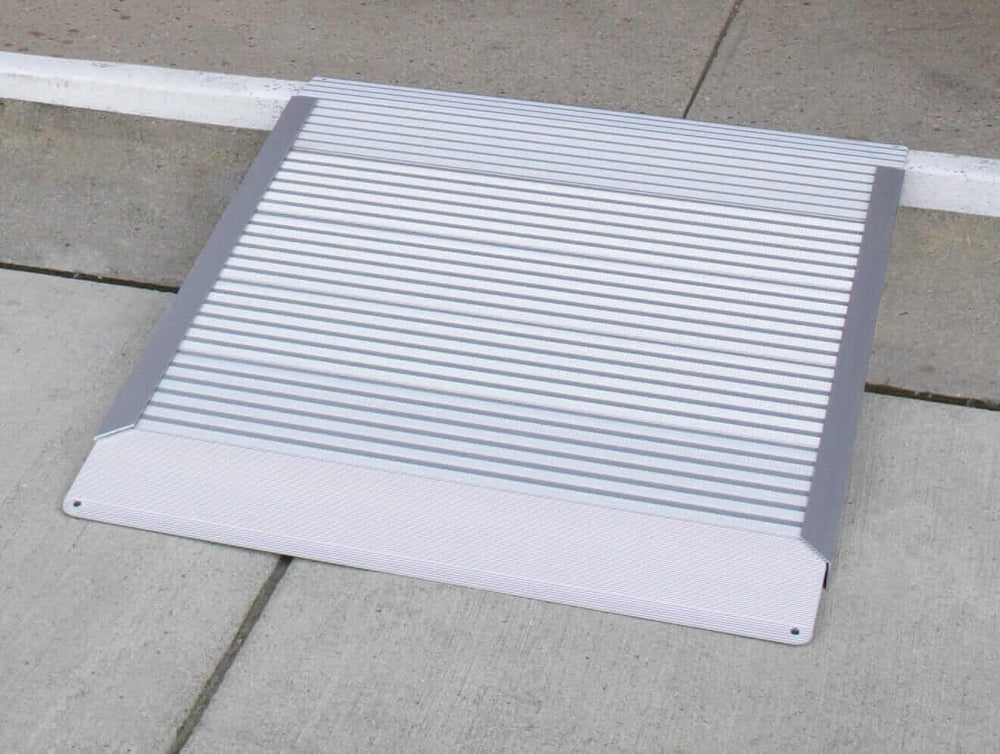

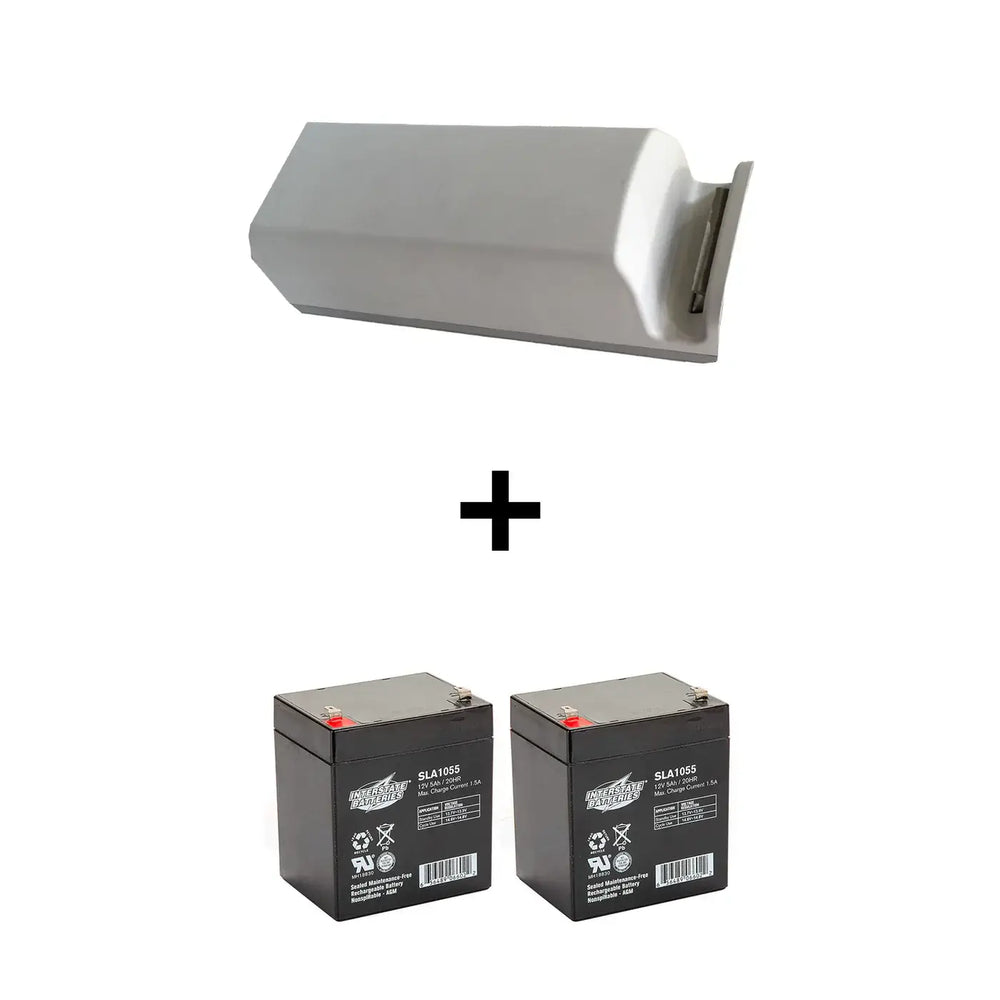


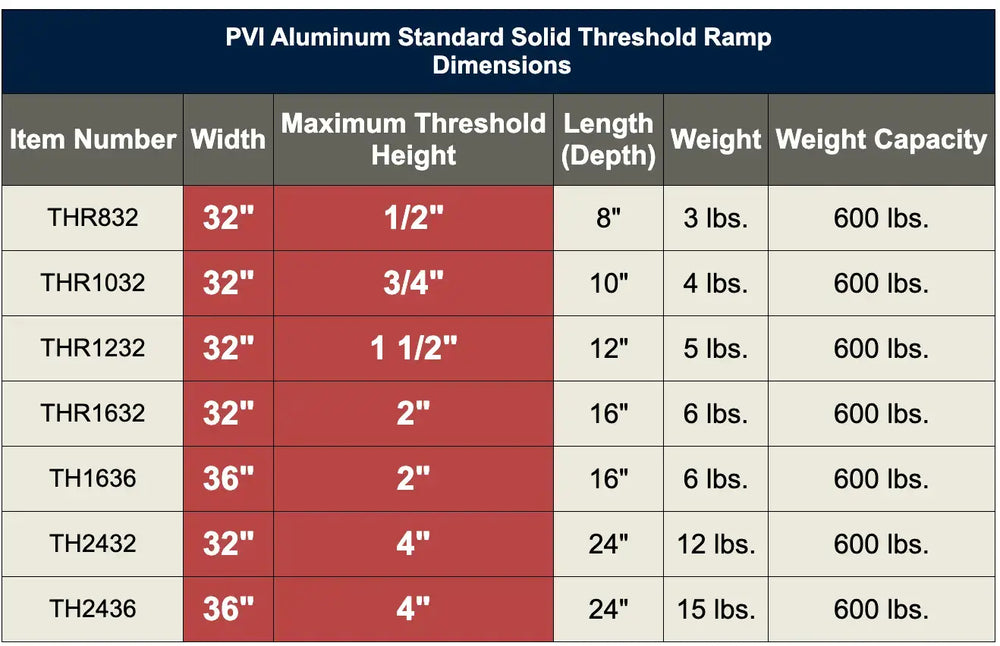
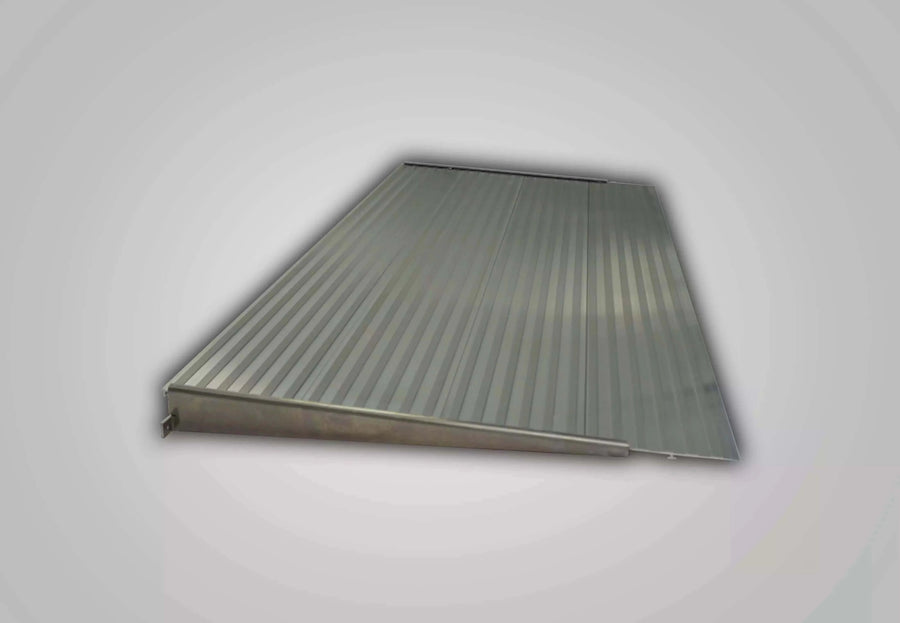


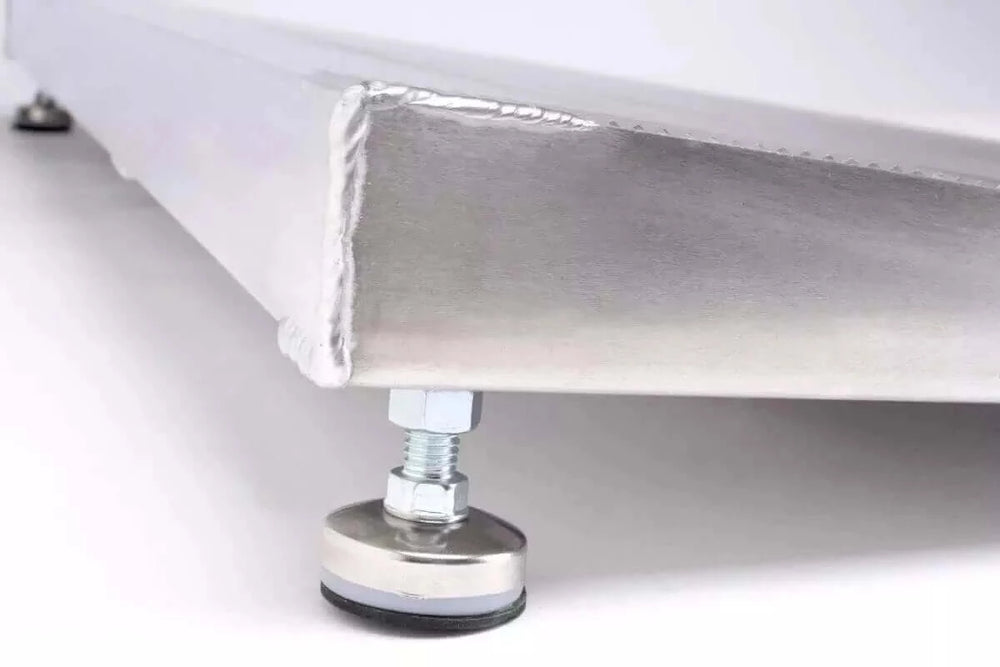
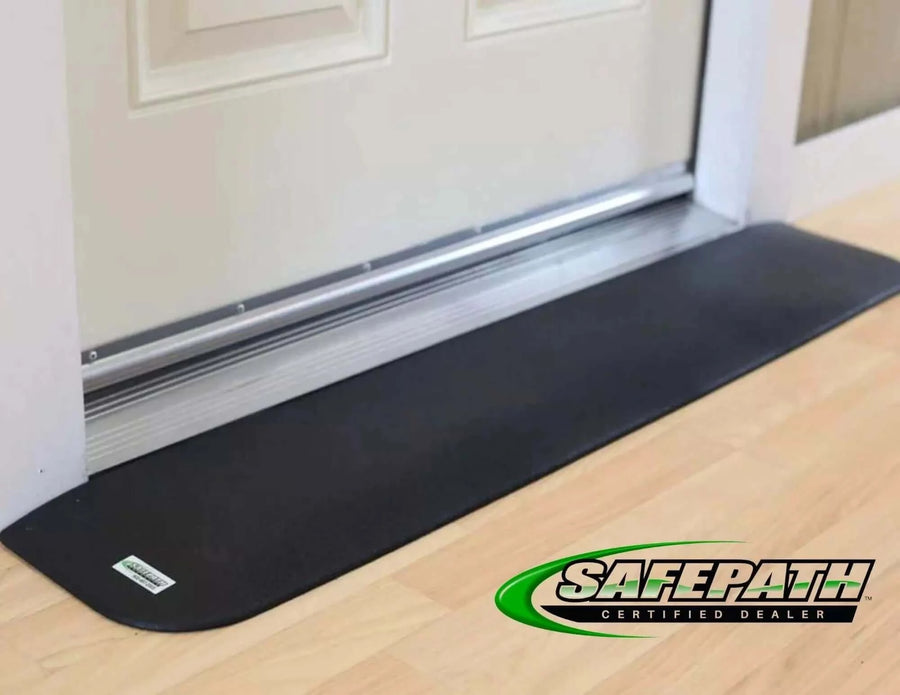
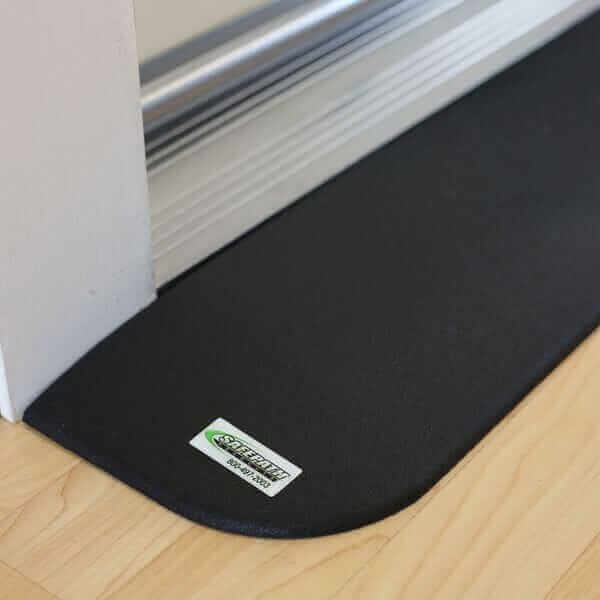
Looking for help for portable ramp and stuff to put wheelchair that u put on vehicle to travel
Leave a comment